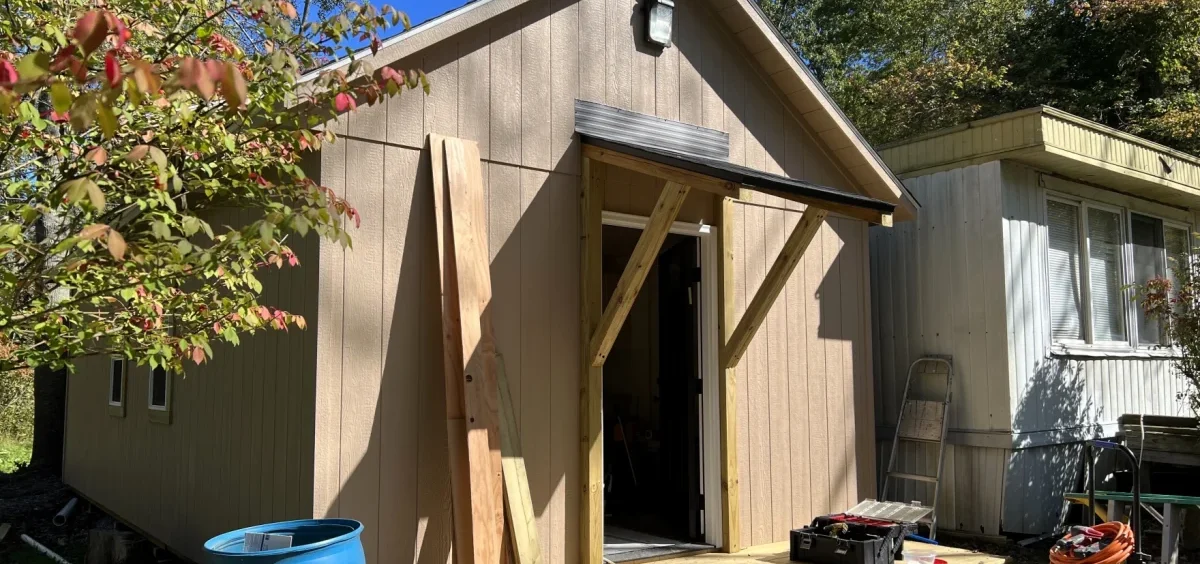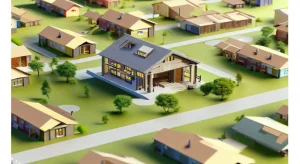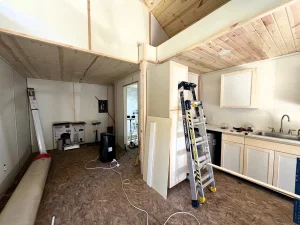News

Nearly 600 veterans are homeless in Ohio. Can villages of tiny homes help?
By: Erin Gottsacker | The Ohio Newsroom
Posted on:
TUSCARAWAS COUNTY, Ohio (The Ohio Newsroom) — Sandy Muntean served as one of the first female military police officers in the U.S. Army. Times were different back in the ‘70s, she remembered.
“There are quite a few men that didn’t think women should do that kind of work,” she said. “And I thought, ‘Well, no, you’re wrong.’”
After her service, she travelled the country, before finally settling on her property in Tuscarawas County, about 50 miles south of where she grew up in northeast Ohio. She’s been living in a trailer there for more than three decades.
For the most part, the property has served her well. It’s located on a quiet street surrounded by towering pines. But lately, she’s had a hard time taking care of it.
“Things wear out,” she said. “I got tired repairing this, repairing that and the cost of everything going up.”
She was struggling to afford rising electric bills, and the quality of her house was deteriorating. So, she reached out to her local VFW, and they decided to help by building her a 14-by-28-foot tiny home, complete with a kitchen, sleeping space and shower.
It’s a solution organizations across the state are considering implementing on a much larger scale.
Plans for Ohio tiny home communities
Veteran homelessness is declining in Ohio — down 5% in the last year, according to the most recent annual count. Nationwide, the number of homeless vets is lower than it’s ever been since those counts began in 2009.
Still, the count found nearly 600 Ohio veterans are experiencing homelessness. Even more are housing insecure.
Like Muntean’s local VFW in New Philadelphia, at least 10 organizations across the state think tiny homes can help: they’re fast to build and inexpensive to maintain.
Near Toledo, the nonprofit Heroes Place plans to build up to 20 tiny homes for homeless veterans. A man in rural Champaign County has already started building a few units for a similar project there.
In central Ohio, the Pickaway County Community Action Agency (PICCA) and a team of Ohio State University students just finished a feasibility study for a tiny home community.
“It just makes sense,” said Becky Hammond, PICCA’s executive director. She says homeless veterans who seek help from the agency sometimes prefer to sleep in a shelter instead of alone because they’re used to being around other people in the military. A village of tiny homes, in her opinion, could give them a sense of camaraderie.
Other organizations like Hope Farm in Akron and Vista Village on the southeast side of Columbus aim to open tiny houses to serve anyone experiencing homelessness, not only veterans.
Clermont County’s example of tiny homes
About 12,000 veterans live in Clermont County, just east of Cincinnati. Officials estimate 6% of them are either homeless, or not far from it.

“He was having issues because of some of the conditions that veterans were living in — and paying money to live in these places — [had] dirt floors, no running water. He had pictures of electrical wires hanging from the ceiling,” Batchler recalled.
Getting out of these conditions can be difficult, said Desmond Maaytah, the county’s community development administrator. Even if a veteran has a federal housing voucher, there’s often nowhere to use it.
(Tuscarawas County is in the same boat. In August, the health department there suspended inspections over concerns that forcing someone to move out because of poor living conditions would force them into homelessness.)
“We have a lack of affordable units here for seniors, for veterans, for young families,” Maaytah said. “[We] can get more of those vouchers, but we have to build the units. We don’t have the units to put people in.”
So Clermont County is building more. Commissioners recently approved $5 million in remaining COVID relief funds to help build a Veterans Village. Batchler says it will feature more than two dozen small one- and two-bedroom cottages – slightly bigger than tiny homes – and a community center with onsite services from the VA. She anticipates it’ll be finished by the end of 2026.
“They served us. We need to serve them. Now it’s our turn to give back to the veterans,” she said.
Moving in
On her property in Tuscarawas County, Sandy Muntean is excited about her new tiny home.
“This is going to be my living room area over to this wall,” she pointed. “This is going to be the kitchen area. Now, granted, it’s small. Boy, I’m telling you, I downsized a lot.”
But the small size comes with perks.

He says assistance with the rising cost of utilities is one of the biggest requests his VFW gets.
“Once they start getting behind, it snowballs,” he said. “You throw medical bills in there, and when your income on Social Security is $1,200 a month, you can get behind in two months.”
This tiny home turned out to be more expensive to build than Chenevey anticipated, but he’s hopeful it will be more affordable for Muntean going forward.
“When she gets moved in here and gets rid of those bills, [she] might be able to save a little money and get enough so in case there’s another issue, she can take care of it,” he said. “That’s the whole point for us is getting them on their feet again.”
For her part, Muntean is thrilled to be an early adopter of this solution.
“I think tiny houses are going to just explode,” she said. “I think everybody’s going to want one.”

